Four Ways to Refresh Your Remarketing Messages
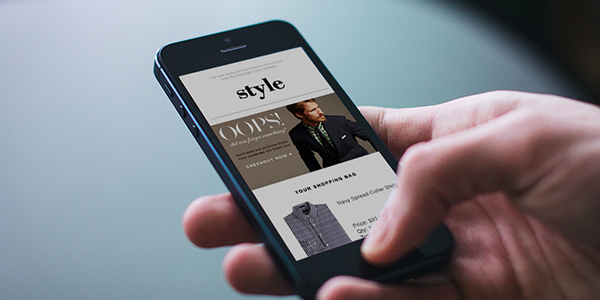
Shopping Cart Abandonment and Browse Abandonment messages are two of the most valuable email campaigns in your arsenal of customer communications. These emails directly impact your bottom line, recovering revenue that was lost when customers bounced from your site before completing the checkout process. On average, these messages can make up 10% - or more – of your total email revenue.
The greatest thing about these messages is that they’re automated. You set them up once and they run in the background – you just sit back and collect the money. But just because they run with very little maintenance required doesn’t mean you shouldn’t update them occasionally. To be sure your campaigns are fully optimized for performance you must refresh the creative to follow new best practices.
Listrak was one of the first to launch these messages all of those years ago. And we are constantly pioneering new and better ways to get even more from these messages. Last year we announced our innovative abandonment nurturing series. This series augments the abandonment message by sending messages that look like regular marketing messages – but feature the abandoned product – on the days the abandonment messages are not sent:
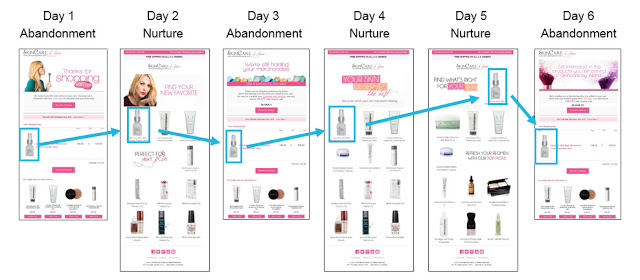
These messages increased revenue over 20% for Skincare by Alana. You can find the full case study here.
New Best Practices for 2016
In case you haven’t updated your abandonment messages in a while, we’ve been testing out new tactics and techniques to see what will give you the biggest lift in revenue. Here is what we found:
1. Add browse abandonment messages
If you aren’t already reaching out to site visitors with a remarketing message, it is time to add this to your marketing mix. The old stigma of these messages being creepy and unwanted is long gone.
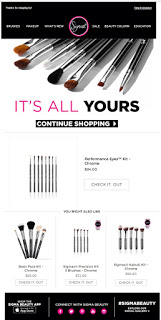
In fact, the complete opposite is now true. Customers find these messages extremely useful and helpful when they are personalized to their shopping experience. Many customers even rely on these messages – just like carts are used as a way for shoppers to hold onto items until they are ready to purchase, browse abandonment messages are a way for customers to not only remember what items they are interested in but also as a way to easily navigate back to the page when they are ready to shop.
Customers are always connected – they can access email and websites through their phones or mobile devices 24 hours a day. Which means they can browse your site anytime. The browse abandonment message lets serves as a helpful tool to reengage them when they are really ready to shop.
Browse abandonment messages give you a much larger audience to remarket to – as long as you have the shopper’s email address, the conversation will be triggered and deployed when the shopper leaves your site.
2. Personalize messages with product recommendations based on onsite behavior
Your browse abandonment messages should definitely include product recommendations based on the shopper’s onsite behavior. Recommended products should be in the same price point as the products that were browsed – if the customer looked at full price merchandise, you shouldn’t show them items on sale. And the recommendations should be in the same category or subcategory as the browsed merchandise. If someone was looking at sweaters, don’t show them pants. These product recommendations help shoppers discover new products that they might not have seen online and will help drive traffic back to your site.
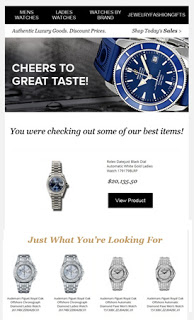
Including product recommendations that are personalized to each shopper’s onsite behavior greatly increases engagement and revenue. It’s a good idea to recommend top sellers or new merchandise – products that aren’t personalized specifically to the individual recipient but are popular with shoppers – but these should be used as a backup. The more personal these messages are, the higher the engagement and sales.
Shopping cart abandonment messages, however, follow different best practices as the goal of the message is different. The goal of a browse abandonment message is to engage shoppers so they go back to your site and continue shopping. The goal of a shopping cart abandonment message is to have the customer complete the checkout process that they already started.
In some cases, personal product recommendations can help customers convert while in others they could be a distraction. It is important to test recommendations in your cart remarketing campaigns to see what works best.
3. Modernize the design
For a long time, shopping cart abandonment messages looked like mini invoices because they included columns for the product name and description, SKU, quantity, and subtotal. However, many of our retailing clients are moving to a more modern look – removing unneeded content and making them more streamlined and sleek.
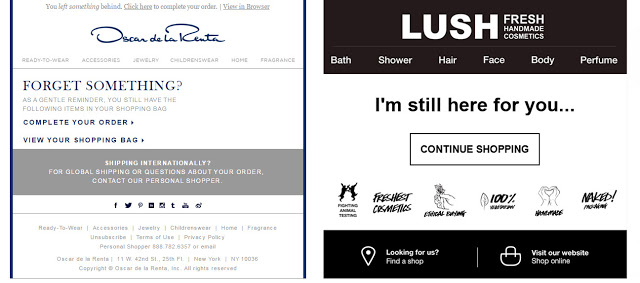
Oscar de la Renta and LUSH leave out product images, prices and other merchandise-related information in favor of a stronger call-to-action. This approach is particularly appealing as it gets customers to click-through the messages to see what items were left in the cart. The design is modern and it really reflects how customers use shopping carts – as a storage place to hold onto items they love until they decide to make the purchase. By omitting the product image, customers are forced to return to the site. They aren’t making purchase decisions in the email itself.
4. Stop relying on discounts
There is no denying that shoppers love a good deal. But shoppers – especially millennials – value convenience even more. And that is good news for retailers because you don’t have to automatically offer a discount in order to get a shopper to come back to complete a purchase.
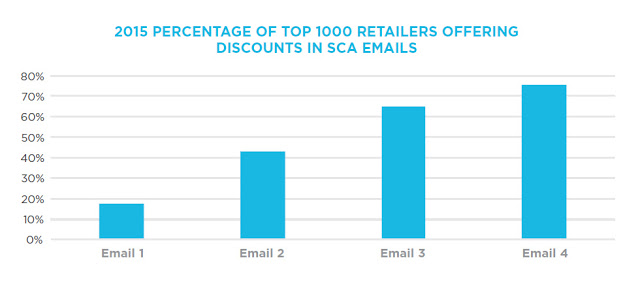
Discounting is definitely trending down as more and more retailers are waiting until the third or
fourth message in the series to offer shoppers a discount. Try withholding the offer in your first and second message – the conversion rate will remain about the same but you will be making more money.

Instead of discounting, try offering a minimum free shipping threshold and then show personal product recommendations in the price point that will push customers over the threshold limit so the shipping is free. Customers will spend an extra $40 or more to buy another product to save $5 in shipping costs as there is more value in the extra merchandise than the shipping itself. Your AOV and revenue will greatly increase – as will customer satisfaction.
Abandonment Messages by the Numbers
Browse abandonment messages have an average 18.8% open rate and 6% conversion rate while shopping cart abandonment messages average 22.5% open and 20% conversion rates. See more email campaign benchmarks in our latest strategy guide “How to Beat the Benchmarks”. But we’ve seen these numbers triple when best practices like the ones outlined in this article are followed.
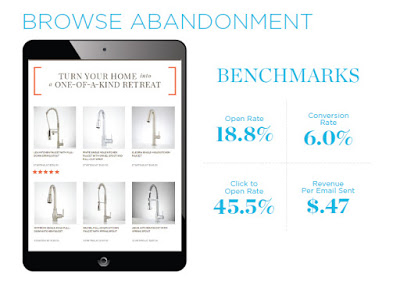
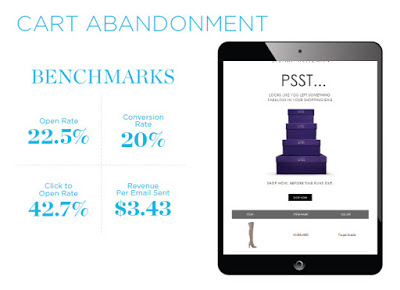
More importantly, we’ve had clients move to us from other email service providers and they notice an immediate 4x increase in the amount of revenue from their abandonment campaigns. Our solutions are designed to increase the reachable rate of shoppers and our personalization engine is second to none.














































.png)

